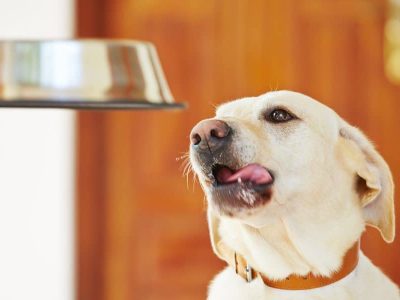Dogs, with their curious noses and insatiable appetites, often find our kitchen counters an irresistible temptation. This behaviour, commonly known as ‘counter surfing,’ can lead to a host of problems, from ingesting potentially toxic foods to damaging kitchenware. While seeing this once can be adorable, repeats of this behaviour can become a serious issue. Bigger, more athletic breeds such as Australian Cattle Dogs are the most common culprits, but even smaller breeds such as Maltese puppies can sometimes get up to high perches. If your dog is a serial counter surfer, take heart – it is possible for you to rectify this behaviour effectively.
Understanding Counter Surfing
Before diving into solutions, it’s important to understand what counter surfing is and why dogs do it. Counter surfing is when dogs jump up onto kitchen counters, tables, or other surfaces to investigate smells and snatch food or objects. This behaviour is primarily driven by two factors: the dog’s instinctive curiosity and the rewarding nature of the behaviour.
- Curiosity: Dogs use their noses to explore the world, and the aromas wafting from your kitchen counter are bound to draw their interest. This curiosity is heightened in breeds known for their strong noses, like Beagles and Bloodhounds.
- Rewarding Nature: If a dog successfully finds food or an interesting item on the counter, the behaviour is rewarded, and they’re likely to repeat it. The allure of a leftover sandwich or a stick of butter can be too enticing for a dog to resist.
Step-by-step Guide to Stop Counter Surfing
Here’s a detailed plan to curb your dog’s counter surfing habit.
Step 1: Remove the Temptation
First and foremost, eliminate the allure by keeping your counters clear of food and other intriguing items. Remember, if there’s nothing rewarding up there for your dog, they’ll be less inclined to jump up. Be consistent about this; even one instance of your dog finding a treat can reinforce the behaviour.
Step 2: Use Deterrents
Consider using safe deterrents to make counter surfing an unpleasant experience for your dog. Some options include:
Noise Deterrents: These can be store-bought or homemade. An example might be a stack of empty cans that clatter down when the dog jumps up.
Surface Deterrents: These can include mats with uncomfortable textures, aluminium foil, or double-sided tape, all of which dogs typically dislike. Make sure whatever you use is safe and won’t harm your pet.
Step 3: Teach Basic Commands
Teaching your dog basic commands like “off,” “leave it,” or “stay” can be particularly effective. Consistency and patience are key here.
- ‘Off’: Use this command when your dog is already on the counter. Lure them off with a treat, then give the command “off,” rewarding them once they’re back on the ground.
- ‘Leave it’: This command is used to prevent your dog from touching or eating something. Start by holding a treat in your closed hand. When your dog stops trying to get the treat and pulls away, say “leave it” and give them the treat.
- ‘Stay’: The “stay” command can prevent your dog from jumping up in the first place. Start this training by asking your dog to stay for a short time at a short distance from you, gradually increasing both.
Step 4: Supervise and Redirect
Always supervise your dog in the kitchen. If you see them about to jump up, distract them with a toy or ask them to perform a different behaviour, like sitting or lying down. This redirection not only prevents the undesired behaviour but also rewards the dog for complying with your command.
Step 5: Create a Dog-Free Zone
If your dog’s counter surfing habit is particularly hard to break, consider making the kitchen a dog-free zone. You can use baby gates or other barriers to keep your dog out of the area. If this isn’t possible, crate your dog or put them in another room when you can’t supervise them in the kitchen.
Step 6: Provide Adequate Mental and Physical Stimulation
Boredom can contribute to counter surfing. Ensure your dog gets plenty of exercise and mental stimulation throughout the day. Use puzzle toys, provide chew toys, and ensure your dog gets plenty of walks and playtime. A tired dog is a well-behaved dog.
Step 7: Consult a Professional
If, despite your best efforts, your dog continues to counter surf, consider seeking help from a professional dog trainer or animal behaviourist. They can provide tailored strategies and hands-on training sessions to curb the behaviour.
Conclusion
Training your dog to stop counter surfing is not an overnight process. It requires consistency, patience, and positive reinforcement. Remember that scolding or punishing your dog can often do more harm than good, creating fear and anxiety. Instead, use the steps and tips provided in this article to manage and eventually eliminate this problematic behaviour, fostering a safer and more peaceful home environment for your dog.












Comments